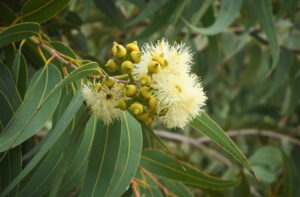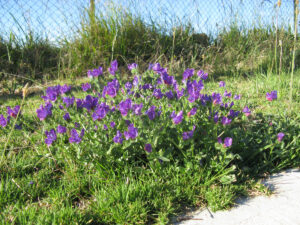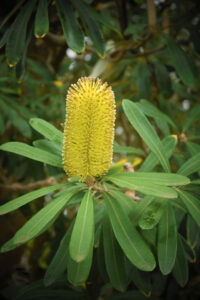
Understanding botanical nomenclature
By Dan Austin
Like many fields, a career in horticulture brings with it the need to learn a whole new language. Whether it is our range of industry-specific tools, plant cultural techniques or botanical terminology, there’s no way around it – without a good grasp of professional language, you’re likely to run into trouble.
After studying a botany related subject or two you’ll never look at plants the same way again. Take picking that humble rose from the garden for example, in your hands you suddenly have a collection of sepals, stamens and carpels, a calyx, corolla, an androecium and gynoecium – it’s enough to make your head spin. What about the way you cut off the flower? Did you make a correct pruning cut above a node to maintain beneficial meristem tissue to assist healing, or cut leaving a stub of internodal stem and an entry point for disease?
It can be intimidating when starting out but before long, it becomes second nature.
However, of all the new terminology to be adopted, there is one area of horticulture that never fails to stump and confuse – botanical nomenclature. Life is easy and familiar as a hobbyist in the garden. The smell of jasmine might be in the air and a rosemary hedge in full bloom, humming with bees. It’s a relaxing scenario to imagine, but as a professional horticulturist, the scene looks a little different. It’s the smell of a particular species of Jasminum in the air, perhaps Jasminum polyanthum,and that rosemary hedge is now Salvia rosmarinus in full bloom. These names are known as ‘binomial’ botanical or scientific names and while often unfamiliar, they are a basic component of communication as a horticulturist.
You may well ask – why complicate the familiar names we all grew up with?

Familiar or ‘common’ names for plants often change, depending on their geographical location, while botanical names remain the same across the globe. A classic local example can be seen in the weed Echium plantagineum. In the eastern states the plant is known as Paterson’s curse, as it seriously degrades pasture and can be toxic to livestock. However, in South Australia, where conditions are drier, the plant is known as Salvation Jane, due to its use as a source of food for grazing animals when drought sensitive pastures die off. Both names are attributed to an early settler named Jane Paterson who brought the plant to Australia as an ornamental curiosity.
Common names can also be used for multiple species of plants. For example, Christmas bush might refer to the Australian Christmas bush (Bursaria spinosa) or the New Zealand Christmas bush (Metrosideros excelsa). In addition, common names are used within active languages around the world, which are continuously evolving and as such, the meanings of words can change over time. Credited to Carl Linnaeus in the eighteenth century, binomial nomenclature avoids this issue, as names are written, predominantly, using the dead languages of ancient Latin and Greek, which are no longer evolving and thus, the meanings by which plants are described, will not change. While they sound unfamiliar, this concept serves a great purpose and although strict Latin pronunciation conventions exist, it’s common to hear differing pronunciations, even amongst academics. The universal value of binomial nomenclature really lies in its written form, so if you are starting out don’t fret too much about precise phonetics.

Binomial names also have two parts, which is useful to quickly distinguish how closely plants are related. The first part of the name describes the genus. A genus is best thought of as a group of closely related species, with a common ancestor. At one time, genera were established using visual similarities, although, more recently, genetic mapping has changed this trend and many visually dissimilar plants can now be found within a single genus. Generic names are derived from three sources which include ‘commemorative’ names (e.g. Banksia after Joseph Banks), ‘descriptive’ names, highlighting a particular characteristic (e.g. Eucalyptus meaning well-covered and referring to the cap on developing flowers) and ‘vernacular’ names that have been Latinised (e.g. known as prunes, the genera containing European plums became Prunus).
The second part of a botanical name is the species. Plant species possess a unique set of characteristics and can successfully breed to form fertile offspring. Species names are derived in the same way as genus names, with the addition of ‘geography’ (e.g., maritima means by the sea, sinensis relates to China etc.). This is the standard for binomial nomenclature. The first letter of the genus is always capitalised, while all remaining characters and the species are written in lower-case. These names should also be italicised or underlined.
A third epithet may also form part of a botanical name after the binomial description, linked with the abbreviations subsp., ssp. or var. These abbreviations stand for subspecies or varieties of plants, which are groups with hereditary characteristics distinct from other populations of their species but without enough distinction to warrant a new species. These are debate fodder for botanists and taxonomists across the world.
When an X is placed between a genus and species in a plant name, it is an indication of a new species resulting from interspecific hybridisation (e.g. Abelia X grandiflora). The species in a hybrid name gives no indication of the parent species (in the case of Abelia X grandiflora, the parent species are Abelia chinensis and Abelia uniflora). In rare cases, intergeneric hybrids occur and in this case the X appears before the generic name and the new genus is a combination of the parental genera (e.g., X Cupressocyparis leylandii is a hybrid of Cupressus macrocarpa and Chamaecyparis nookatensis).
In addition, there are plants created by humans or ‘cultivars’ (cultivated varieties). These are generally identified with catchy titles in English appearing after botanical names. The first letter of each word is capitalised, and the cultivar contained within single quotation marks or preceded by the abbreviation cv. (e.g., Coprosma repens ‘Fireburst’)
There is much more to the plant naming story, which is still being written and changing all the time, but it’s a fairly safe bet to adopt these basic principles when getting started.
Main photo: Eucalyptus means well covered and describes the plants’ developing flowers
